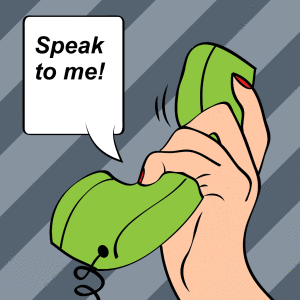“I’ve been thinking about last week’s guest, “I said.
Chris, our Digital Marketing expert, asked, “Why’s that? Jennifer was delighted with our help.”
“All of us gave her good advice I think,” said Gail. “Each time we have a guest it seems like all of us learn as well. It makes the session a little more focused and each of us tries to be more concise. I try to concentrate on writing and editing advice and each of you dive into your individual expertise.”
“Thas true,” said Rob with a dollop of southern syrup. “Y’all expect me to concentrate on Brand at those times so that’s what I do.”
Rick, Mr. Direct Marketing, as usual, direct in every way said, “So why were you thinking about Jennifer and content?
I responded, “She’s an expert, right?”
There were nod’s and sounds of agreement around the table.
 “So if you’re an expert, my research suggests that the way you market depends on the phase your business is in: Startup, Growth or Established. We didn’t take the time to figure that out. Early on the critical elements are Networking and Direct Contacts. When consultants get to the Growth Phase there’s more of a balance. Referrals become dominant but are closely followed by Direct Sales, Prior Experience and Networking. In the established firm Referrals and prior experience account for about 65% of the business.”
“So if you’re an expert, my research suggests that the way you market depends on the phase your business is in: Startup, Growth or Established. We didn’t take the time to figure that out. Early on the critical elements are Networking and Direct Contacts. When consultants get to the Growth Phase there’s more of a balance. Referrals become dominant but are closely followed by Direct Sales, Prior Experience and Networking. In the established firm Referrals and prior experience account for about 65% of the business.”
Kate, our sales doyen who knows how to listen asked, “So are you saying we somehow let Jennifer down? I think there’s another way we could have been more cogent for her. There’s research from Hinge that shows the impact of most of the content techniques used by experts are separated by less than two percentage points. She pulled a whitepaper from her oversize bag and read:
- Books 8.1%
- Speaking (non-keynotes) 7.3%
- Keynote 7.2%
- Company Website 7.1%
- Blogs 8%
- Articles 6.4%
- E-mail Marketing 6.3%
- SEO 6.3%
- Regular Column 6.1%
- Personal Website 6.0%
There all pretty much the same. And notice there is no social media in that list.”
“True,” Rick said, “In addition, I can guarantee you that speaking is the most powerful if you can do it well.”
“I think you’re right,” I said. “In both my personal and consulting experience speaking is the single most powerful way to reach a large audience with a personal touch. If you do it well it is the one activity that creates Referrals and Word of Mouth for you in a way none of the other possibilities can.
Kate nodded and added, “there’s one more thing I read in the research that Jennifer should know:
When buyers were asked what convinced them someone was an expert over a third of them answered,
The ability to make complex topics simple.”
The Takeaway
To stand out as an expert make complex topics simple and do it in front of large numbers of people via speaking, a book and regularly released materials.
Jerry Fletcher’s blog recaps conversations with clients, prospects and the unruly mob of business development professionals he consorts with. They discuss marketing that works from solopreneur to enterprise level. Jerry Fletcher is the ringleader and “Watson” of the dialogue. Look at the blog at: www.JerryFletcher.net
Jerry has been researching and implementing small business marketing that builds businesses, careers and lives of joy for 25 years as President of Z-axis Marketing, Inc. Learn more at www.JerryFletcher.com
Schedule a personal appearance. Jerry speaks internationally on Networking, Marketing and Contact Relationship Magic. www.NetworkingNinja.com









